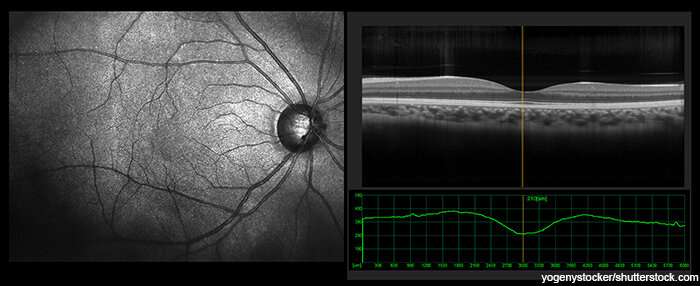Research group discovers role of two proteins in sight and preventing blinding eye diseases

Research led by Nicolas Bazan, MD, Ph.D., Boyd Professor and Director of the Neuroscience Center of Excellence at LSU Health New Orleans School of Medicine, has discovered unique patterns of genetic activity that may lead to the development of blinding retinal diseases. The results are published online in the Federation of American Societies for Experimental Biology (FASEB) journal, BioAdvances.
"A central question to understand blinding retinal diseases is how key genes are expressed to sustain retinal function and how retina building blocks participate," notes Dr. Bazan, who also holds the Ernest C. and Yvette C. Villere Chair of Retinal Degenerative Diseases Research at LSU Health New Orleans. Bazan's research team investigated retina structure and function using rodent models where two potentially strategic proteins were deleted. They used sensitive and specific molecular imaging to map the spatial arrangement of the building blocks where the retina cells that sense light (photoreceptors) are constructed. They used a multidisciplinary approach that includes Optical Coherence Tomography imaging (a procedure used clinically to see the integrity of retina noninvasively) and electroretinogram to decide about function.
They report the discovery of novel gene signatures leading to mutations in two proteins—MFRP, which participates in cell fate and development, and Adipor1, whose absence in the retina results in the inability to take up and incorporate the building block docosahexaenoic acid (DHA 22:6) and the onset of retinal degeneration. A single amino acid mutation of Adipor1 occurs in a high proportion of retinitis pigmentosa patients. Different forms of this receptor mutation have been found in age-related macular degeneration (AMD), as well as in other forms of retinal degeneration.
The researchers found that the absence of 22:6 leads to modifications, which then trigger an increase in proinflammatory genes and a decrease of genes that are critical for visual system function.
The study demonstrates that the MFRP mutation resembles the ADIPOR1 mutation on multiple levels. Deletion of these proteins leads to flecked retina and slow cell death onset. Functionally, the mutations express the same degree of functional attenuation. Both mutants clearly demonstrate the inability to take up and incorporate building blocks, which results in remarkable changes in the retina.
"Although the gene signature shows that both mutants are activated by signals involving proinflammatory cytokines, we found that each of these pathways has distinct features," Bazan says.
"Moreover, our results highlight the critical role of MFRP and ADIPOR1 in preserving retinal function. Our findings demonstrate that the maintenance of retinal function relies on two proteins MFRP and ADIPOR1, acting to ensure proper acquisition and distribution of key building blocks molecules necessary to sustain protection against age-related Macular degeneration and other retinal degenerative deceases."
More information: Marie‐Audrey I. Kautzmann et al, Membrane‐type frizzled‐related protein regulates lipidome and transcription for photoreceptor function, The FASEB Journal (2019). DOI: 10.1096/fj.201902359R


















